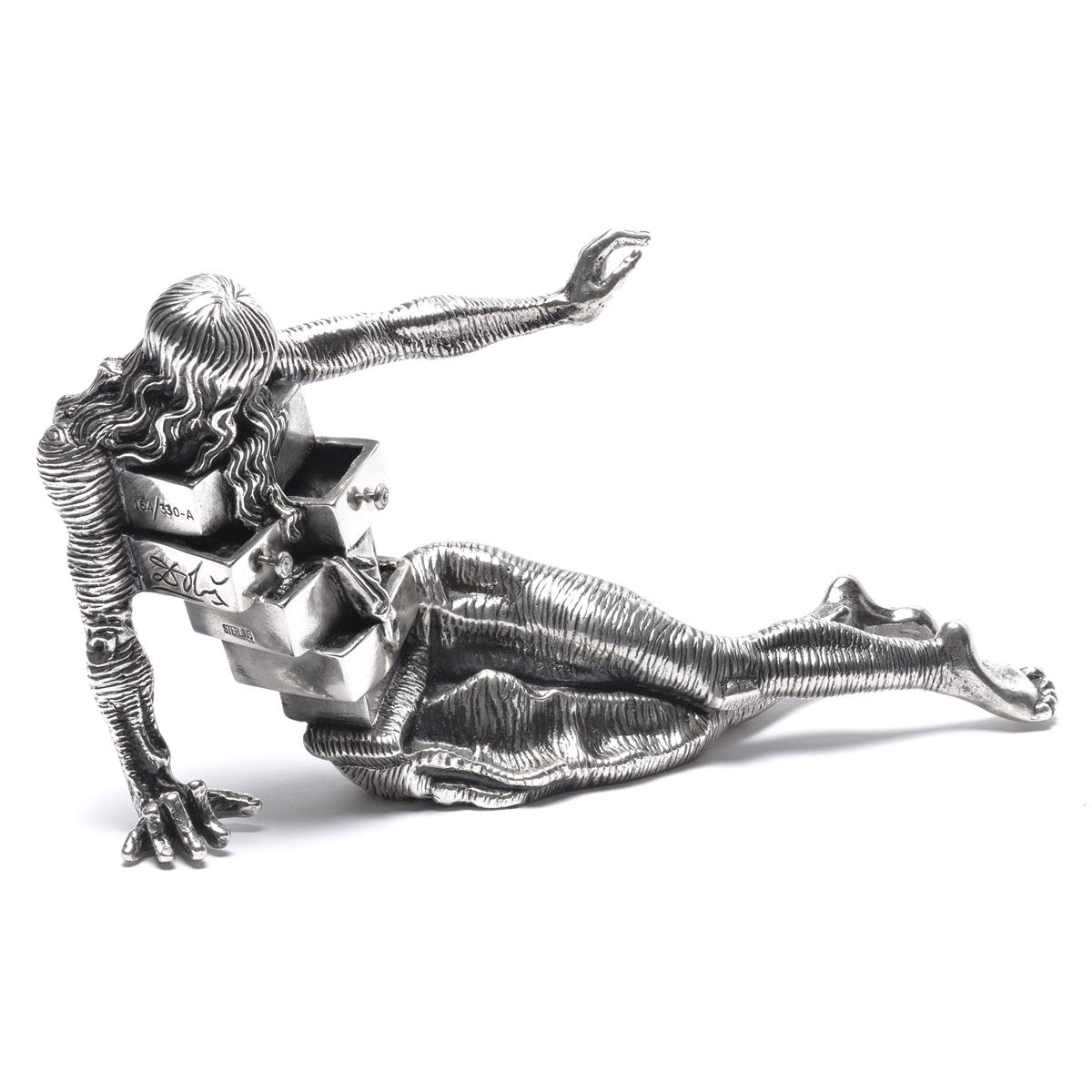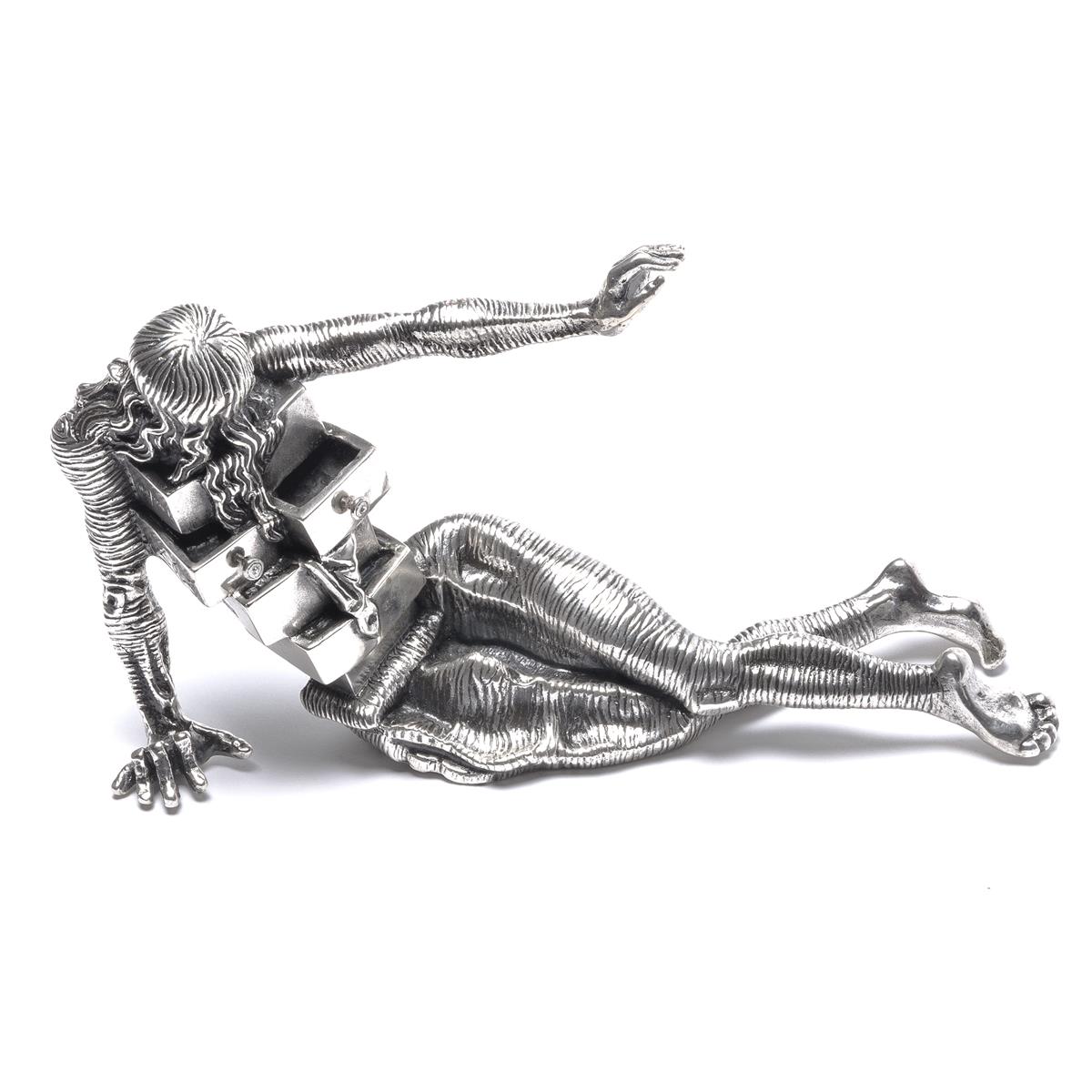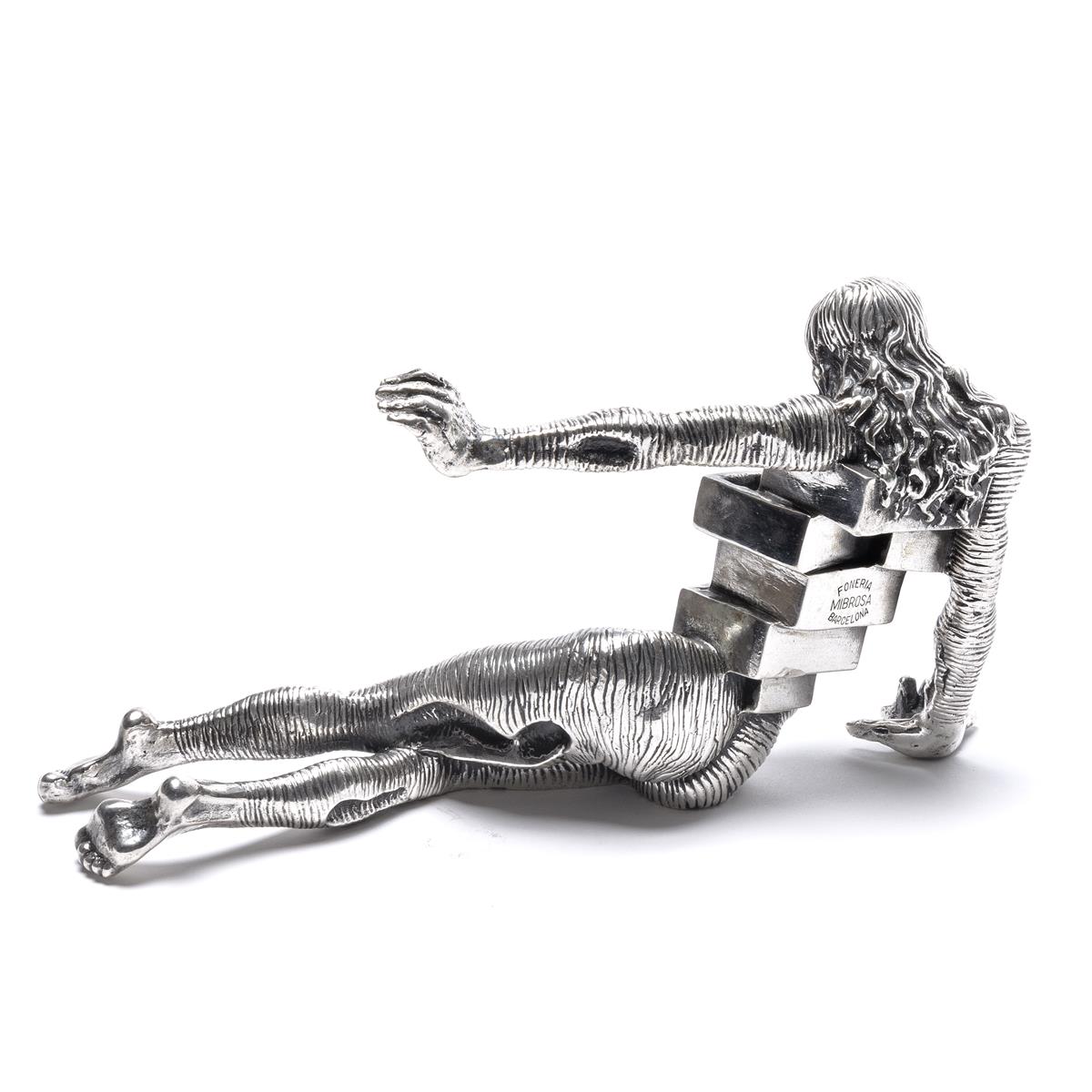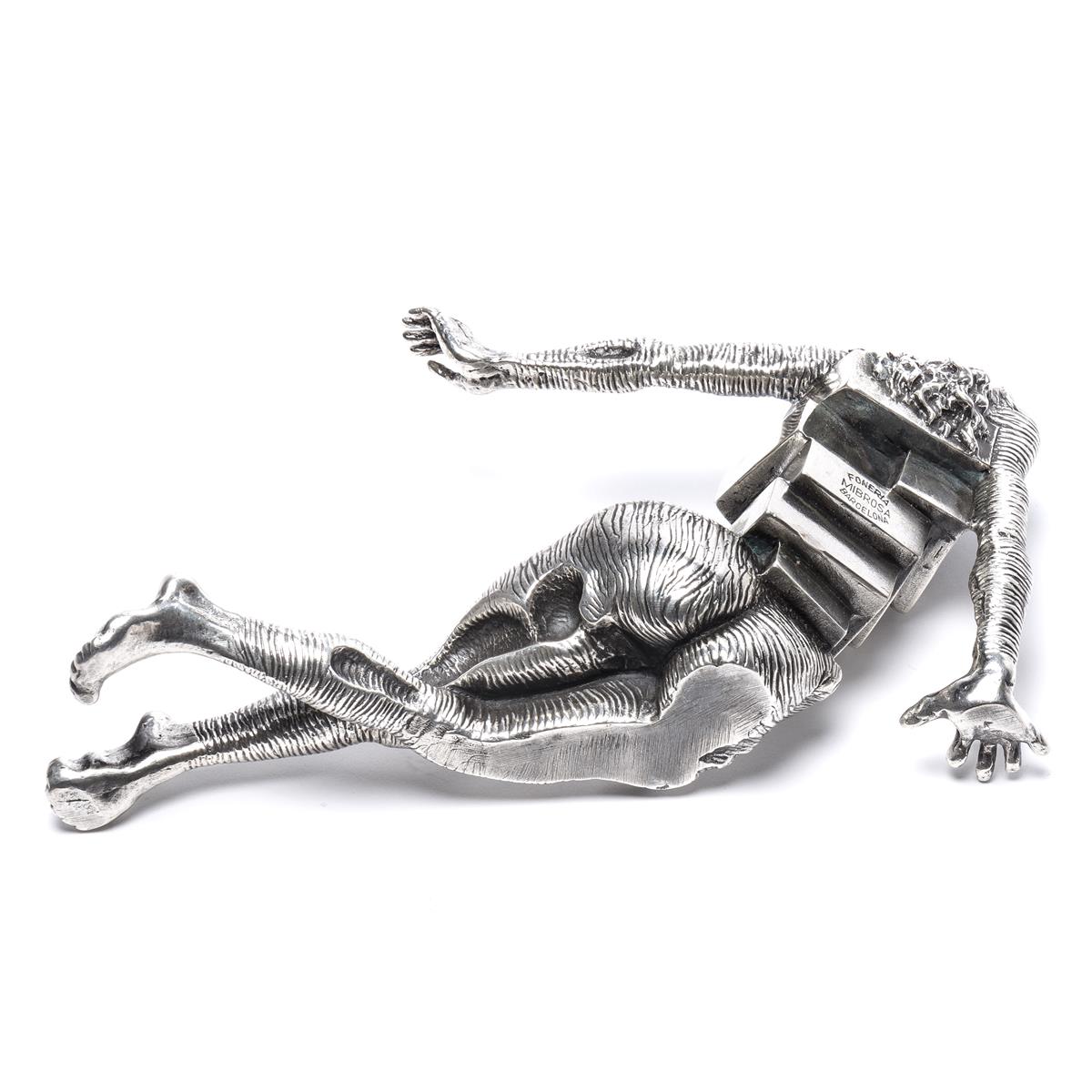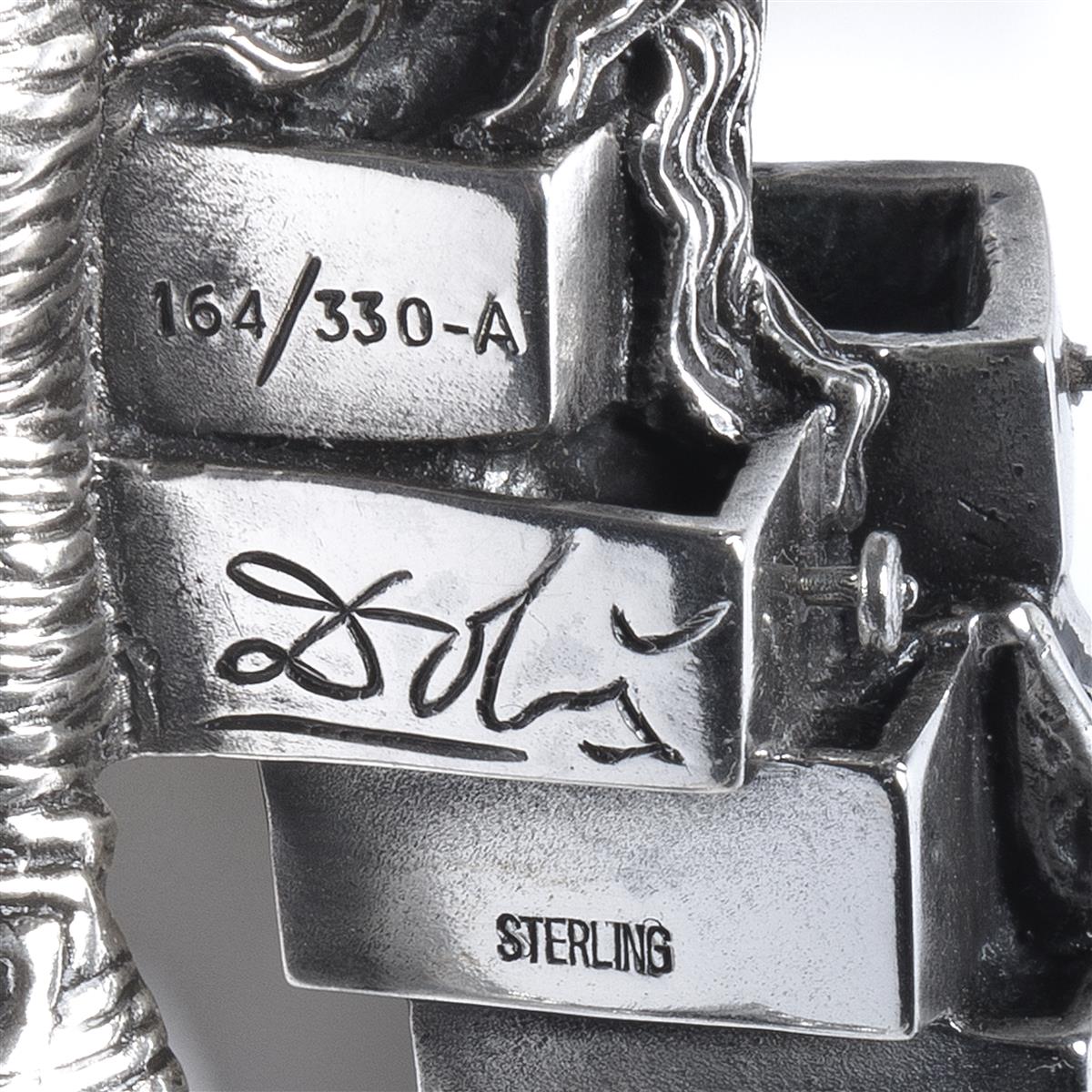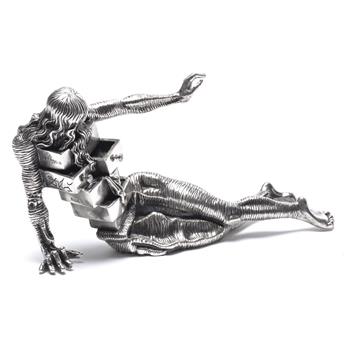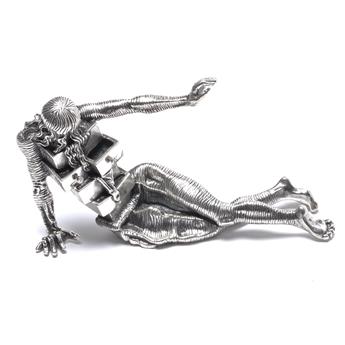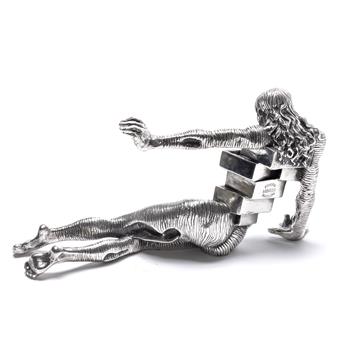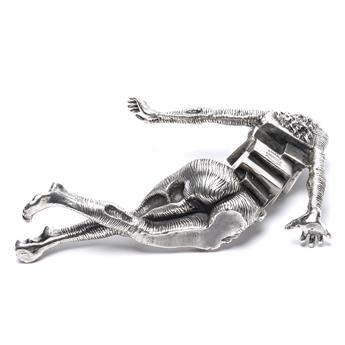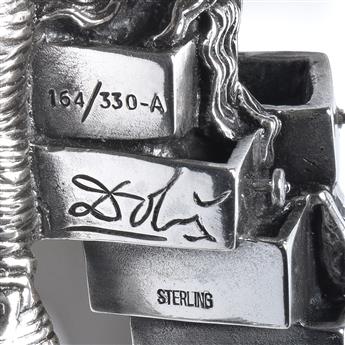Sale 2630 - Lot 239
Price Realized: $ 8,500
Price Realized: $ 10,625
?Final Price Realized includes Buyer’s Premium added to Hammer Price
Estimate: $ 7,000 - $ 10,000
SALVADOR DALÍ
Le Cabinet Anthropomorphique.
Sterling silver, 1973. 225x125x58 mm; 9x5x2 1/2 inches. With the artist's signature, the material "Sterling" and edition number 164/330-A on left side of drawers. Cast by Foneria Mibrosa, Barcelona, with the foundry mark on drawers verso.
Published: Passoni, Morse and Field, Dalí, Milan, 1986, page 79 (bronze cast illustrated); Levi, The Dalí Universe, London, 2000, pages 80-81 (larger bronze cast illustrated); Descharnes, Dalí, The Hard and the Soft, Spells for the Magic of Form, Sculptures & Objects, Azay-le-Rideau, 2004, page 266, number 683 (bronze cast illustrated); Lechien, Dalí, Dalí! ou l'éclosion apothéosique d'un sculpteur, Brussels, 2004, pages 70 and 99 (larger bronze cast illustrated).
Provenance: Private collection, New York; private collection, Chicago.
Dalí's (1904-1989) Le Cabinet Anthropomorphique revisits his celebrated Venus de Milo with Drawers, plaster, 1936, for which he appropriated the form of the famous classical Greek marble now in the Musée du Louvre, Paris. The Art Institute of Chicago, which holds the Dalí plaster sculpture, notes, "Among Dalí's many memorable works, perhaps none is more deeply embedded in the popular imagination than Venus de Milo with Drawers, a half-size plaster reproduction of the famous marble statue (130 / 120 BC), altered with pompon-decorated drawers in the figure's forehead, breasts, stomach, abdomen and left knee. The combination of cool painted plaster and silky mink tufts illustrates the Surrealist interest in uniting different elements to spark a new reality. For the Surrealists, the best means of provoking this revolution of consciousness was a special kind of sculpture that, as Dalí explained in a 1931 essay, was 'absolutely useless . . . and created wholly for the purpose of materializing in a fetishistic way, with maximum tangible reality, ideas and fantasies of a delirious character.' Dalí's essay, which drew upon the ideas of Marcel Duchamp's readymades, inaugurated object making as an integral part of Surrealist activities.
Influenced by the work of Sigmund Freud, Dalí envisioned the idea of a cabinet transformed into a female figure, which he called an 'anthropomorphic cabinet.' Venus de Milo with Drawers is the culmination of his explorations into the deep, psychological mysteries of sexual desire, which are symbolized in the figure of the ancient goddess of love."
Dalí also made an oil on wood painting of the subject, Anthropomorphic Chest of Drawers, 1936, now in a private collection, Germany, and a lithograph, Drawers of Memory, 1965.
Le Cabinet Anthropomorphique.
Sterling silver, 1973. 225x125x58 mm; 9x5x2 1/2 inches. With the artist's signature, the material "Sterling" and edition number 164/330-A on left side of drawers. Cast by Foneria Mibrosa, Barcelona, with the foundry mark on drawers verso.
Published: Passoni, Morse and Field, Dalí, Milan, 1986, page 79 (bronze cast illustrated); Levi, The Dalí Universe, London, 2000, pages 80-81 (larger bronze cast illustrated); Descharnes, Dalí, The Hard and the Soft, Spells for the Magic of Form, Sculptures & Objects, Azay-le-Rideau, 2004, page 266, number 683 (bronze cast illustrated); Lechien, Dalí, Dalí! ou l'éclosion apothéosique d'un sculpteur, Brussels, 2004, pages 70 and 99 (larger bronze cast illustrated).
Provenance: Private collection, New York; private collection, Chicago.
Dalí's (1904-1989) Le Cabinet Anthropomorphique revisits his celebrated Venus de Milo with Drawers, plaster, 1936, for which he appropriated the form of the famous classical Greek marble now in the Musée du Louvre, Paris. The Art Institute of Chicago, which holds the Dalí plaster sculpture, notes, "Among Dalí's many memorable works, perhaps none is more deeply embedded in the popular imagination than Venus de Milo with Drawers, a half-size plaster reproduction of the famous marble statue (130 / 120 BC), altered with pompon-decorated drawers in the figure's forehead, breasts, stomach, abdomen and left knee. The combination of cool painted plaster and silky mink tufts illustrates the Surrealist interest in uniting different elements to spark a new reality. For the Surrealists, the best means of provoking this revolution of consciousness was a special kind of sculpture that, as Dalí explained in a 1931 essay, was 'absolutely useless . . . and created wholly for the purpose of materializing in a fetishistic way, with maximum tangible reality, ideas and fantasies of a delirious character.' Dalí's essay, which drew upon the ideas of Marcel Duchamp's readymades, inaugurated object making as an integral part of Surrealist activities.
Influenced by the work of Sigmund Freud, Dalí envisioned the idea of a cabinet transformed into a female figure, which he called an 'anthropomorphic cabinet.' Venus de Milo with Drawers is the culmination of his explorations into the deep, psychological mysteries of sexual desire, which are symbolized in the figure of the ancient goddess of love."
Dalí also made an oil on wood painting of the subject, Anthropomorphic Chest of Drawers, 1936, now in a private collection, Germany, and a lithograph, Drawers of Memory, 1965.
Exhibition Hours
Exhibition Hours
Aliquam vulputate ornare congue. Vestibulum maximus, libero in placerat faucibus, risus nisl molestie massa, ut maximus metus lectus vel lorem.



